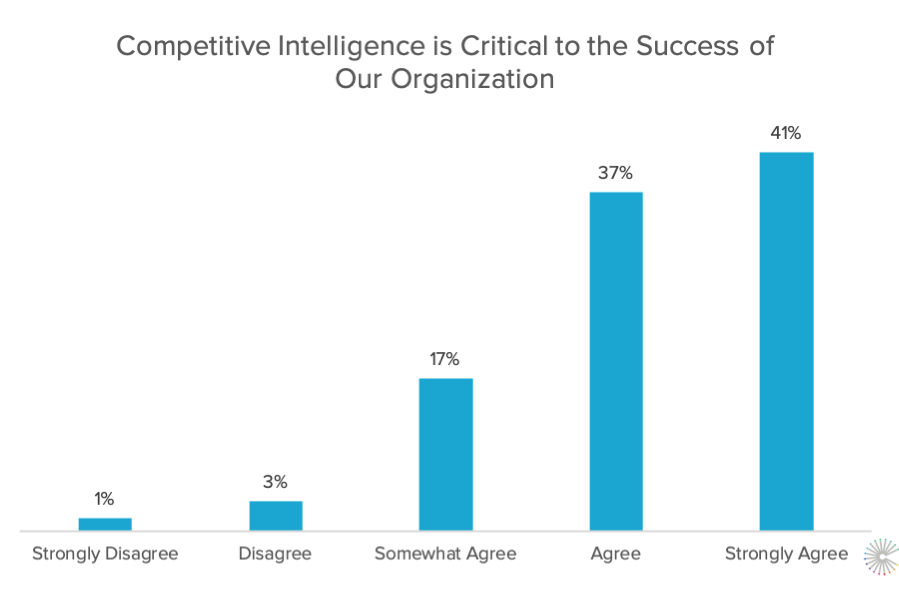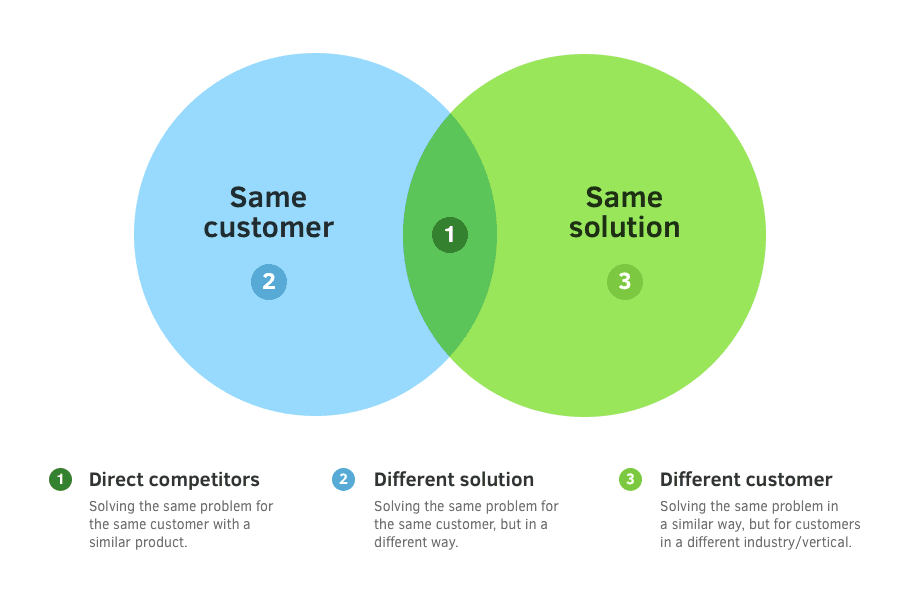In today’s competitive business landscape, staying one step ahead of the competition is one of the biggest challenges modern companies face.
No matter what product or service you’re selling, it’s more than likely someone else is also selling it. So how can you ensure customers choose your brand over another? With a competitor analysis!
When was the last time you conducted a competitor analysis and surveyed the playing field in your market niche? A while ago? That’s okay, it’s never too late to start!
In this article, we’ll explain everything you need to know about conducting a competitor analysis and how it can help to boost your business. We’ve got plenty to cover, so let’s jump right in.
What is a Competitor Analysis?
Competitor analysis involves identifying and evaluating competitors in your market.
The purpose of a competitor analysis is to gain insight into the competitive business landscape through research, data collection, and insights, and to use this information to inform your own strategies as you strive for success.
Conducting a competitor analysis might seem daunting to first-timers, but it’s a simple process that yields huge results. To carry out competitive analysis, you’ll need to consider your competitors’ positioning, sales and marketing strategies, the share of voice, product or service offerings, and customer experience.
Armed with this information, you can proceed to identify gaps in content and the market that you can effectively fill.
What are the advantages of conducting a competitor analysis?
According to research from Crayon, 37% of business professionals “agree” and 41% “strongly agree” that competitive intelligence is critical to company success.

It’s no secret that acknowledging and understanding your competition is a crucial part of developing strategies to stand out from them. But what are the tangible benefits of conducting a competitor analysis for your business?
- Identify gaps in the market: These gaps are opportunities that you can snatch up and fill! You can provide your target audience with something valuable that’s currently missing in the market and gain an edge.
- Understand which strategies are working for others in your industry: Through competitive analysis, you can see which strategies yield the best results and apply those principles to your own marketing efforts.
- Identify market trends: You’ll get an overview of what’s trending in your market. You can use this information to inform future strategies and develop new products and services in line with shifting consumer demands.
- Discover your strengths and weaknesses: Doing this helps you to fine-tune your offerings and develop unique selling points (USPs) that make you stand out from the crowd.
How to Conduct a Competitor Analysis in 5 Easy Steps
Below we’ve outlined 5 simple steps for you to follow when conducting your competitor analysis. You can do these over and over again, and adapt each step to the needs of your specific business and market niche.
1. Identify and segment your competitors.
The first step in your competitor analysis is to—of course—identify your competitors! In today’s online business landscape, it’s more than likely you’re not the only company offering whatever it is you’re offering.
There are different types of competitors you’ll need to identify, as well as what differentiates them from your brand. Here’s a look at the three main competitor categories.
- Direct competitors: These are competitors that operate in the same geographic area and offer a similar product or service to yours.
- Indirect competitors: Refers to companies that offer a similar product differently, but satisfy the same need or solve the same problem.
- Replacement competitors: These are businesses that offer a different product or service, but which your customers could decide to purchase instead of yours.
Depending on the scale of competitor analysis you want to run, you might consider identifying the competition in all of these categories. However, direct competitors are the most important ones to focus your research on as these are the ones you’re directly competing with for your customers’ attention.
So, what’s the best way to identify competitors?
First of all, it’s a good idea to set up a spreadsheet in Excel or Google Sheets to store all the information you find. You can also invest in tools like SEMrush, which allow you to identify which companies are ranking for keywords relating to your product or service.
It’s more than likely that you already know who your biggest competitors are. If you’re not 100% sure, don’t worry! It’s easy enough to discover them.
You can identify competitors with a simple Google search, entering your product/service or another keyword related to them. You might try searching for “Best [insert product or service here]” and taking note of the top results in your area.
You can also turn to social media to identify trending hashtags or get an idea of what brands customers in your niche are engaging with.
It’s important to keep all types of competitors on your radar. The market is always shifting, and indirect competitors can quickly enter direct competitor territory—which you’ll want to be aware of!

2. Analyze their market positioning.
In the second step of the competitor analysis, you’ll need to analyze your competitors’ market positioning. This involves examining how competitors have established their brand image or identity and how they want to be perceived by consumers. At this stage, you’ll need to consider everything from the price of their products to their eCommerce digital marketing strategy, to the channels they’re selling through.
You can start by looking at their brand messaging and how they communicate with their audience to better understand where they stand in the relation to your target market. Check out their website copy, USPs, and value propositions to find out who their core market is and what market gap they fill. What does their sales process involve? Do they take an omnichannel approach to sales and customer support? Are they growing or downscaling?
Through understanding your competitors’ market positioning, you can define what sets your product or service apart from the rest and carve out your own space in a competitive landscape.
3. Examine their content and social media strategies.
Once you’ve got a good grasp on who your competitors are and what they’re offering, it’s time to start looking at how they engage with their audience by examining their content and social media strategies. Start by finding the answers to questions like:
- Do they have a blog?
- Do they create and publish whitepapers?
- Do they send out an email newsletter to their customers?
- Do they host webinars or publish videos?
- What other types of content do they produce?
Identify content formats and themes, and consider how they convert leads into paying customers from their content. Doing this allows you to identify their strengths and weaknesses when it comes to executing a content strategy.
You can then use this information to pinpoint topics they haven’t covered, or content formats they don’t offer and use these gaps to inform your own strategy.
Once you’ve looked at their content, it’s time to turn to their social presence. Consider the type of content they share and how they use social media networks to engage with customers. Do this across social media channels like Facebook, Instagram, LinkedIn, and Twitter to see how they’re using each one to appeal to different target audiences—or not.
Do they share multimedia posts on Facebook or focus on text-based communication? Do they use LinkedIn for lead generation? What do they share there? How often do they post on Instagram? Do they upload stories, or use IGTV?
Answering these kinds of questions will help you identify competitor strengths and weaknesses, as well as opportunities for your own social media strategy.
4. Determine the level of engagement.
This step involves examining how a competitor’s target audience responds to what they post both on their website and their social media pages. Look towards the number of shares, comments, and likes they’re getting on average and consider questions like:
- Does their audience engage particularly well with certain topics?
- Are the comments mostly positive or negative? Why do they receive negative comments?
- What topics are people tweeting about or hashtagging?
- Do they have follow and share buttons attached to their content?
- Do they categorize posts with hashtags?
- How do they interact with their followers and vice versa?
5. Perform a SWOT analysis.
The final step is to perform a SWOT analysis. This involves noting a competitor’s strengths and weaknesses and identifying any opportunities and threats.
A SWOT analysis enables you to identify internal and external factors that affect your business’s success. It’s about understanding the state of your business, sales, and marketing efforts before you make any decisions about moving forward with future strategies.
Some questions to consider include:
- What are your competitor’s strengths? What do they do really well in terms of products, content strategy, marketing, social engagement, etc?
- What don’t they do well?
- What advantages do they have over your company? What advantages do you have over them?
- Have they identified any opportunities in your market? What opportunities have they missed?
- In which ways would you consider this competitor to be a threat?
Once you’ve conducted the SWOT analysis, you can effectively compare and contrast their strengths and weaknesses against your own. You’ll be able to identify missed opportunities and gaps in the market that you can take advantage of, as well as any threats to protect yourself against. This allows you to better position your brand in your market niche and stays ahead of the game in today’s competitive landscape.
Final Thoughts
By taking an objective look at your business and how it compares to other competitors on the market you’ll be able to identify areas for improvement and implement data-driven changes that set you apart from the rest. Remember that in today’s dynamic business landscape, it’s important to conduct a competitor analysis regularly.
Competitor analysis provides you with insight into gaps in your market. Evaluating where your competitors are positioned in the market, their tactics and offerings will allow you to identify new ways to attract and serve your ideal customers.
Want to know more about conducting a competitor analysis and how it can take your business to the next level? We can help! Book a consultation today.

